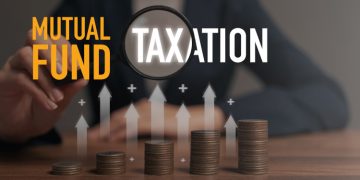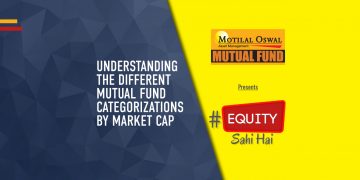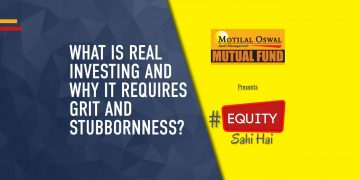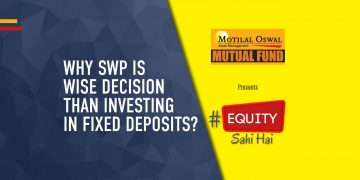Investor preference of selection of stocks based on market capitalization
Some investors prefer to have a specified minimum allocation of large, mid, and small-cap stocks in their portfolios. On the other hand, some investors prefer that the fund manager decide the allocation of their funds among large, mid, and small-cap stocks based on market opportunity. For the first group of investors, a multi-cap mutual fund is suitable. For the second group of investors, a flexi-cap mutual fund is suitable. This article focuses on how to invest in top flexi-cap mutual funds in 2023.
What is a flexi cap mutual fund?
A flexicap mutual fund is an open-ended mutual fund scheme that invests a minimum of 65% of its total assets in equity and equity-related instruments. It is an open-ended dynamic equity scheme investing across large, mid, and small-cap stocks.
Who should invest in flexi-cap mutual funds?
Investors looking to diversify into large, mid, and small companies with a single mutual fund scheme can consider investing in a flexi-cap mutual fund scheme. However, do note that the fund manager will have the flexibility to decide how much allocation will be made to large, mid, and small-cap stocks based on market opportunity. Since a flexi-cap mutual fund has a minimum of 65% of its total assets invested in equities, it has high risk. Hence, investors with an aggressive risk profile should consider investing in a flexi-cap mutual fund scheme.
Taxation of flexi-cap mutual funds
For taxation purposes, flexi-cap mutual fund schemes are treated as equity schemes and taxed accordingly.
- Short-term capital gains (STCG) tax: If you sell your flexi-cap scheme units within twelve months of purchase, the capital gain will be classified as short-term capital gain (STCG). The short-term capital gain (STCG) tax will be levied at 15%.
- Long-term capital gains (LTCG) tax: If you sell your flexi-cap scheme units after twelve months of purchase, the capital gain will be classified as long-term capital gain (LTCG). Every financial year, the first ₹1 lakh long-term capital gain will be exempt from taxation. The incremental long-term capital gain above ₹1 lakh will be taxed at 10%.
Risks involved in flexi-cap mutual fund schemes
Flexi-cap funds are categorised as high-risk investment products. During certain events like the 2008 Sub-prime crisis and the 2020 Covid-19 pandemic, equity markets had gone down by as much as 50%. During those times, investors in flexi-cap funds faced huge notional losses. However, over a period of time, equity markets recouped their losses and went on to make new highs. As a result, flexi-cap funds also reversed their losses and gave handsome returns to their investors.
Compounding effect of mutual funds with respect to time
In the long run, flexi-cap mutual funds benefit from the magic of compounding. The longer the investment time horizon, the better the chances of high returns. Flexi-cap funds invest in a mix of mid, small, and large-cap companies. In the long run, mid and small-cap companies have the potential to grow at a faster rate and compound your wealth.
Over a period of time, small caps have the potential to become mid-caps, and mid-caps have the potential to become large caps. Thus, if you invest in the best flexi-cap mutual funds, compounding can help you create wealth for fulfilling your financial goals.
Advantages of flexi-cap mutual funds
In the case of a flexi-cap fund, the fund manager doesn’t have any limitations in terms of choosing stocks for investment belonging to any particular sector, market capitalization, or geography. A flexi-cap mutual fund scheme gives you the advantage of having a diversified equity portfolio spanning across large, mid, and small-cap stocks with a single scheme. The fund manager can also allot a certain percentage of the portfolio to international stocks. If you invest in the best flexi-cap mutual fund, it has the potential to give you inflation-beating high returns and thus create wealth for you.
Flexi-cap mutual funds are classified as equity schemes and taxed accordingly. Equity mutual funds have a favorable tax treatment compared to debt mutual funds. Thus, a flexi-cap fund gives you the advantage of wealth creation along with favorable tax treatment.
Reasons to invest in flexi-cap mutual fund schemes
Some of the reasons for investing in flexi-cap mutual funds schemes include:
- A minimum of 65% exposure to an equity asset class that has the potential to create long-term wealth. However, beyond 65% equity allocation, the fund manager can also include some exposure to debt securities. It can provide a diversified portfolio with a mix of equity for growth and debt for stability.
- A diversified equity exposure to large, mid, and small companies in a single mutual fund scheme. As per asset allocation strategy, within equities, an investor should have exposure to large, mid, and small-cap stocks.
- Large, mid, and small-cap indices take turns to outperform each other in various years. Nobody knows which index will outperform next year. Hence, it is advisable to have exposure to a flexi-cap fund. It will ensure that irrespective of whichever index outperforms, your investment portfolio will benefit as it has exposure to stocks in that index.
However, please note that flexi-cap mutual fund schemes carry high risk due to their high exposure to equities that can be very volatile in the short run. Hence, you should consider investing in flexi-cap mutual fund schemes only if you have an aggressive risk profile.
Disclaimer: This blog has been issued on the basis of internal data, publicly available information and other sources believed to be reliable. The information contained in this document is for general purposes only and not a complete disclosure of every material fact. The information/data herein alone is not sufficient and shouldn’t be used for the development or implementation of an investment strategy. It should not be construed as investment advice to any party. All opinions, figures, estimates and data included in this blog are as on date. The blog does not warrant the completeness or accuracy of the information and disclaims all liabilities, losses and damages arising out of the use of this information. The statements contained herein may include statements of future expectations and other forward-looking statements that are based on our current views and assumptions and involve known and unknown risks and uncertainties that could cause actual results, performance or events to differ materially from those expressed or implied in such statements. Readers shall be fully responsible/liable for any decision taken on the basis of this article.












































